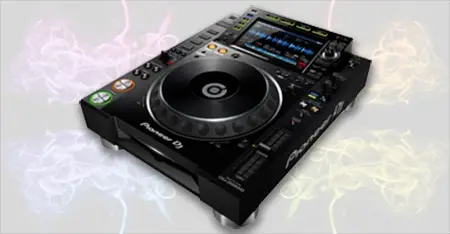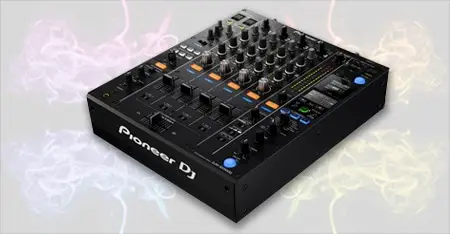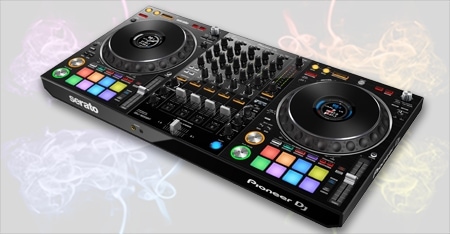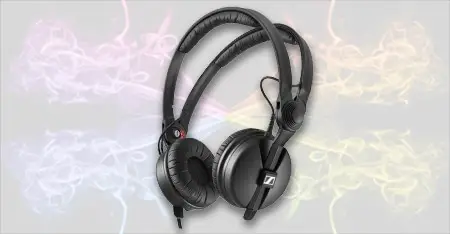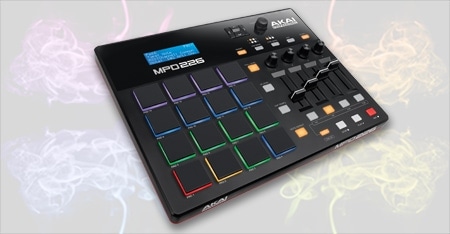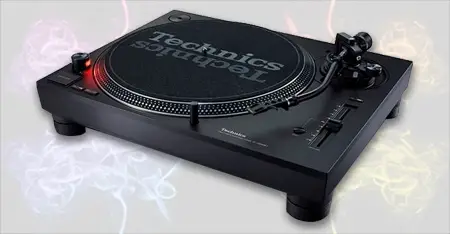
As a DJ you could spend fortunes collecting every bit of kit on offer and the amount on the market is only increasing. Back in the day, the options you had were fairly limited and really came down to which manufacturer you were going to choose for your turntables and mixer. However, these days there are all sorts of other options like CDJS, DDJs, or MIDI controllers to name a few.
In this article, we are going to detail one piece of equipment specifically and answer, what is a DJ controller?
A DJ controller is an all-in-one unit that takes all the elements of traditional decks and a mixer and merges them into one piece of kit. Often, but not always, they work in tandem with a laptop to give the DJ all the features and controls they are used to. Plus many more that never would have been possible with a traditional setup.
What Are DJ Controllers Used For?
Contents
They Mimic Traditional Setups
DJ controllers essentially replace the traditional setup of two decks and a mixer by incorporating them all into one unit. This allows you as a DJ to mix and scratch tracks and adjust EQs exactly as you would on an old school setup.
Generally, DJ controllers are used for controlling DJ software although this is not always the case. Some are completely stand-alone units (more on that below).
When used with software the DJ controller will often remove the need to use the mouse to move around and click within the software. Aside from the standard DJ functions of platter and volume etc they will also be knobs and controls that allow you to change or select new tracks for example.
Once a track has been loaded onto the deck you have all of the familiar controls from a traditional deck. In fact, A DJ controller will often have more functions and features available.
But DJ Controllers Go Way Beyond Traditional Setups…
As touched on above, DJ controllers are often designed to be used with specific software. This means you have a way more possibilities than you’d get with a standard deck.
Things like:
Re-editing Tracks (without using an audio editor)
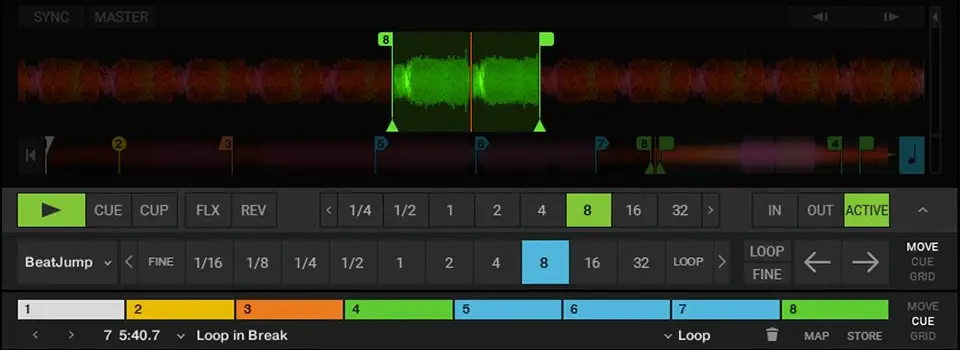
This allows you to rearrange tracks and do things like creating longer intros, switch around drops, or drum out new melodies. To do this using a traditional setup you would either have to edit the actual audio file (in something like Logic or Ableton) or perform all drumming or looping sections live.
This may be easy enough when the routines are simple, but by being able to preprogram them you are able to get way more complex.
Re-editing functionality can be found in:
- Serato DJ Pro (using the Flip expansion pack)
- Traktor
Customizable Control Mapping & Interface (Sometimes)
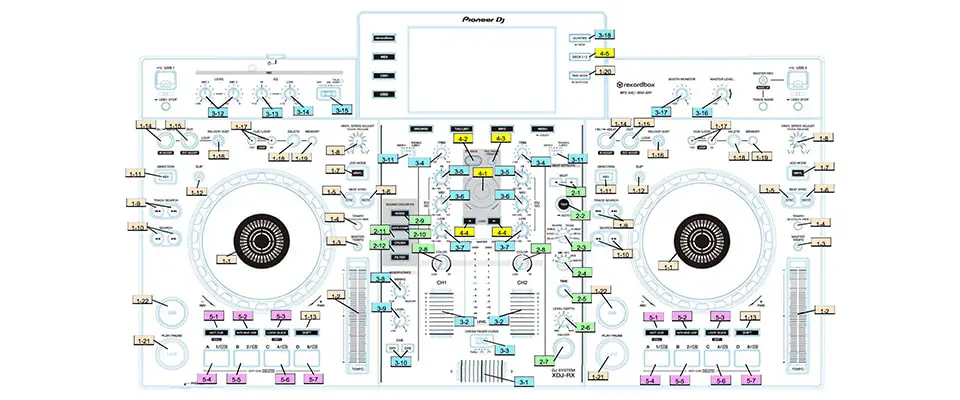
The way you and every other DJ uses the equipment is different and depends on your style. For example, there will often be entire functions of a DJ setup that you will go nowhere near.
DJ software often allows you to customize the interface so that everything you use regularly is shown clearly and is right at your fingertips. And everything you don’t use can be hidden away.
Although a DJ controller will come pre-installed with mapping these can also often be changed so that all the controls you use most are within easy reach.
Customizable mapping & interfaces can be found in:
- Traktor (customizable mapping and interface)
- Serato DJ Pro (customizable mapping)
- Mixxx (customizable mapping)
- Mixvibes Cross (customizable mapping and interface)
Video Mixing
Previously video mixing was something that could be done on very high, specialty visual mixers. DJ software and controllers now make it possible by harnessing the processing power of your laptop.
This allows you to either create your own synced visuals or simply play the track’s music video. Either way, it’s a neat way to add an extra dimension to your sets.
Video mixing can be found in:
- Serato Pro DJ (using the Video expansion pack)
- Mixvibes Cross
What Does a DJ Controller Do?

While a DJ controller does do everything very similar to a normal deck, they also have many features that are unique only to controllers.
Features you will find on both a traditional setup and controllers are:
- Play/pause buttons
- Allow you to start, stop, and cue the loaded track.
- Jog Wheels
- Mimic the platter of a traditional turntable and allows for scratching, adjusting speed, and nudging tracks to keep them in time.
- Knobs & Pots
- Are used to control things like EQ, FX, and volume.
- Faders
- Channel Faders – Allow you to control the volume of individual tracks.
- Crossfader – Can be adjusted either to fade smoothly between tracks, or set to instant cut, which is vital when scratching.
- Ports
- Mixers and DJ controllers both feature a selection of ports that allow you to output sound to the speakers, link a controller to a laptop, and add extra hardware (like extra decks).
Unique to DJ controllers are:
- Pads
- These allow you to trigger things like hot cues, samples, or FX.
- Software first integration
- While decks and mixers can often be linked to a laptop, for the most part, this has been designed and built retroactively (for example, like needing to use Pioneer’s Pro DJ link).
- Controllers, however, have been built with DJ software as the first priority. This gives them much deeper, intuitive integration and access to all of the software features discussed above.
Love DJ gear?
So do we, check out our favorites…
How Does a DJ Controller Work?
One way to think of DJ controllers is like a specialized computer keyboard and mouse. All the actual work is done by the linked laptop.
Old school mixers and analog decks (i.e vinyl decks) produced and processed the sound between them. Then digital decks came along and they had to handle the audio processing internally.
However, as laptops have become more powerful, then DJ controllers have been able to outsource the processing side of things.
This is what allows them to:
- Be smaller & more portable and they don’t require internal processors etc.
- Offer more features as building software features is considerably cheaper than adding physical components/features to the units themselves.
DJ controllers work by transferring signals back and forth between the unit and the laptop.
USB Connections
Nearly all DJ controllers link to the laptop via USB. This allows them to send the control signals back and forth as well as the processed audio. The audio is then output to the sound system via standard RCA cables.
MIDI Control
DJ controllers are basically MIDI controllers by a different name. The various controls (like faders, pots, and buttons) all send MIDI signals to the computer to trigger the relevant sections of the software.
For example, if you were changing the volume on the controller this is basically no different than if you were tapping it down on your keyboard. The controller is essentially just mapped to the settings within the software.
This is also why you are often able to adjust and customize the mappings exactly as you wish.
LCD Screens & Touch Display
Although controllers mostly rely on a laptop to function, they also aim to rid you of having to look at it too much. That’s why they will often have a built-in screen.
This relays a lot of the most important information from the computer directly in front of you. Some high-end models also have a touchscreen to give you access to your music library etc.
DJ controllers with touchscreens include:
- Pioneer XDJ-RX2 (all-in-one unit, no laptop required)
- Denon PRIME 4 (all-in-one unit, no laptop required)
(Push links to check price on Amazon)
There are all-in-one units that actually don’t require a laptop at all. That’s where the in-unit screen is vital.
Communicate with Software
As discussed elsewhere in the article, DJ controllers offload a lot of the work to your computer. Audio mixing is done on the computer, rather than a traditional mixer that mixes the audio signals and outputs one sound.
Controllers also do this via the USB cable. One of the benefits of doing this is that having a screen directly on the controller is not necessary. All the information can be displayed on your computer screen instead. This helps keep the controller compact or at least frees up space to pack in more features.
Motorized Platter
Some DJ controllers come with a motorized platter that aims to emulate the spinning of vinyl turntables.
In theory, this gives a more realistic hands-on feel for DJs that are either coming from a traditional setup or want to use the controller for scratching. As it stands at the moment, there are not many controllers with motorized platters.
Two of the best DJ controllers with motorized platters are:
Numark’s NS7II
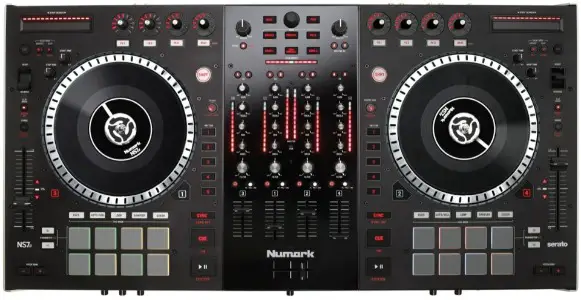
This is one of Numark’s flagship controllers as alongside the motorized platter it includes three separate screens. That means you can use it as a standalone unit without the need for a laptop.
Aside from spinning, the strength of the motorized platter can also be adjusted.
For turntablists, the turntable can be loosened, making tricks and scratches easier to perform. You can also go the other way and increase the torque to mimic a traditional turntable as much as possible.
They have even gone as far as to add a real vinyl plate and slip mats to replicate the vinyl feel.
Traktor Kontrol S4
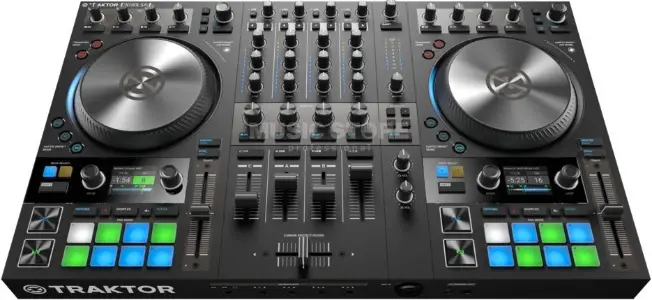
(push image to check price on Amazon)
Native Instruments produce another DJ controller with motorized platters. And is best used with a laptop.
The S4 actually goes further than Numark’s model by adding haptic feedback to the platters (haptic feedback is using touch as a form of communication, think your phone vibrating when you touch a button). This means that as you move the platter over a cue point on the waveform, you will actually feel it in your fingers.
It is actually the haptic feedback that I missed most when moving from real vinyl to digital controllers.
When using vinyl, you can literally feel the music with your fingertips. For example, if you rock a vinyl over a kick drum you can feel the grooves in the vinyl.
The S4 goes a long way to replicate this, and it does a good job. This kind of tactic feedback is simply another way to interact with your music and free you from reliance on the screen.
For example, you could watch the cue points on your screen but with haptic feedback, you’ll be able to feel with your fingers. Meaning you can be looking and engaging with your audience instead of staring at a screen.
This is also very essential when scratching as you know when you are moving the platter on and off the sound.
Push here to check the price of the Kontrol S4 on Amazon.
A DJ controller with motorized platters also allows you to perform other techniques familiar from vinyl turntables. For example, DJs often used to touch the side of the platter to slow it down and bring a track back in time.
Doing this on a stationary platter (i.e on a CDJ) would have little effect, or even stop the track given too much pressure. To get the same effect on a stationary platter a DJ would actually have to move the platter backward.
However, with a motorized platter, the DJ is able to simply hold their finger against the spinning plate platter. Thereby slowing the track slightly.
While DJ controllers with motorized platters “nice to have”, I would say that they are not essential. Especially for DJs that never knew any different i.e never used vinyl decks.
Really, DJ controllers with motorized platters are designed for either:
- DJs that have transitioned from vinyl turntables to controllers.
- DJs that want to specialize in turntablism and scratching, in which case the tactic feedback from a moving platter makes this infinitely easier.
Benefits of a DJ Controller
- Portability
- Because controllers offload a lot of the work to the laptop, the unit itself needs fewer electronics inside and doesn’t necessarily require built-in screens.
- This means that units can be smaller, lighter, and a lot more portable than a full traditional setup.
- Cheaper than a traditional setup
- As you only have to buy the controller and a laptop. a controller setup can be considerably cheaper than a usual DJ setup.
- This is because you’d have to buy two decks and a mixer and then you’d probably still need a laptop so you can browse/buy tunes and load them onto the USBs.
- MIDI enabled & customizable
- Controllers are flexible as you can adjust the MIDI assignments to suit your style. This means a controller setup can end up being fairly unique to you.
- Tightly integrated with software
- This gives you way more features than a normal CDJ set up.
- The attached DJ software (Serato, Traktor etc) is often updated with new features that are then mapped to the controls on the controller. However, with CDJs etc this only happens with firmware updates, which are rarer and more limited than software updates.
- Recording sets
- This also becomes a lot easier with a controller, as most software you use will have a feature built-in that allows you to record your sets.
- With a traditional setup, however, you would need a separate recorder or a line running into a laptop, for example in order to record your set, either way, it is an extra cable and an extra unit in order to record.
- Easier to search your music library
- As you have the full real estate of your laptop screen, as well as the keyboard and mousepad to work with.
- Plus the controller itself will often include transport controls in order to scroll through your library and select tracks.
- Easier to preview tracks
- On traditional setups you have to load the track on to a deck and then play/flick through them manually to preview them.
- However, on a controller laptop setup, you can preview tracks without loading them onto one of the decks and also use the mouse to quickly flick through an entire track. This makes it much faster to preview and select tracks when you are in the middle of a set.
- Plug & play
- Because DJ controllers are so tightly integrated with software, there is often very little setup required. You can essentially plug them in and you’ll be able to start seeing waveforms and adding cue points within your track.
- To do similar using a CDJ or DDJ will require setup using something like Pro DJ link. This may be something that clubs may not have. So it can be more difficult to replicate your home setup if you are using the equipment provided by a venue.
Head here to see which DJ controller I recommend
What’s the Difference Between a DJ Mixer and a Controller?

The two can be quite easy to confuse as the central console of a controller has many, if not all, of the features found on a DJ mixer.
Essentially a controller is an all-in-one unit that has the two decks either side and the mixer in the middle. Other than a laptop and speakers it does not require any other bits of kit to function.
However, mixers basically do nothing by themself. In order to get music playing through it, you need to add decks and then route it out to speakers.
The biggest differences between a mixer and a controller, particularly high-end models, ultimately come down to the features available.
Because DJ controllers tend to be all-in-one units, they sometimes have to compromise on features. This is due either to a lack of space or by adding too many features making them cost-prohibitive.
On a standalone mixer, however, although somewhat limited by space, because it is a specialized unit manufacturer can really go to town. Packing a mixer full of as many useful and innovative features as possible.
Takeaways – What’s the Difference Between a DJ Mixer and a Controller?
- A controller is an all-in-one unit that has a mixer built-in.
- A mixer is a standalone unit that requires decks (or some other kind of media player) in order to produce sound.
- The difference between a DJ mixer and a controller will ultimately come down to the features.
- Controllers may have to compromise on or reduce features due to space or price constraints.
- High-end DJ mixers are where you find the most features and innovation.
Do You Need a Mixer With a DJ Controller?
Essentially, no, you do not need a mixer with a DJ controller. As discussed above, DJ controllers already have a mixer built into the center of the console. The controller is then directly linked to the sound system, negating the need for another mixer in the middle.
I have had a user ask the question of how to route a controller through a mixer. This was because the mic inputs were better on the third party mixer than those built into the controller itself.
This is one of the only situations where you would need to use an external mixer i.e if you wanted to expand on the functionality of your controller.
For the most part though, you don’t need a mixer with a DJ controller. In fact, doing so would often add more clutter or space requirements than a DJ booth needs.
What Is a Good DJ Controller for Beginners?
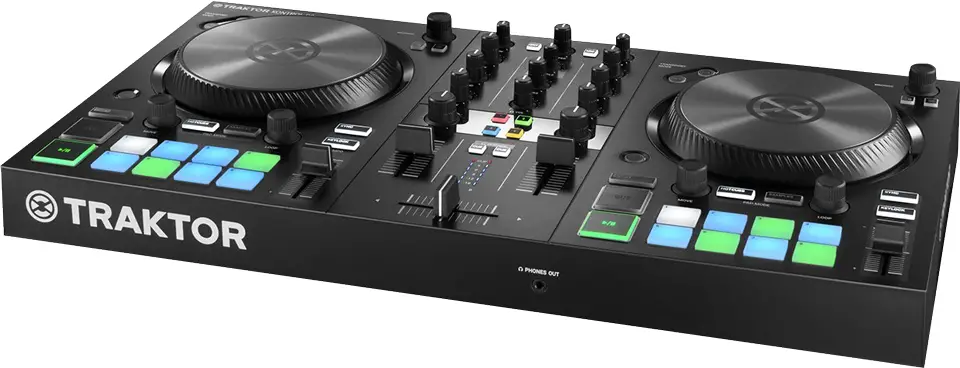
(push image to check price on Amazon)
My recommendation for the best DJ controller for beginners would be the Traktor Kontrol S2 MK3. I chose this as it is a good compromise between simplicity and build quality.
Coming with a Traktor license gives you access to up to four decks. It also has all of the essential controls that a person needs to learn and master to have the skills required of a professional DJ.
As well as the standard platters and mixer section. The S2 also comes with eight pads (per deck) allowing for things like the triggering of cue points or accessing Traktor’s remix functionality.
Native Instruments are one of the leaders in the DJ industry so you get a good balance between features, innovation, and cost.
Click here to check the price on Amazon.
Can You Use a DJ Controller in a Club?
Yes, absolutely. Especially as the days of DJ controllers being looked down on are long gone.
While they may have started life as plasticky and gimmicky, DJ controllers have now evolved to include many of the same features and components of pro DJ equipment. This has earned them the right to be used in a club and as respected bits of DJ kit.
There are a few points to consider when answering if you can use a DJ controller in a club:
- Is your DJ controller professional enough?
- Most clubs will have high-end DJ equipment. So, unless you have a high-end controller, you may be better off using the equipment that is already there to ensure the best quality sound and reliability.
- Space can also be an issue
- Unless you are a big name DJ the venue engineer may not be particularly keen on having to rearrange or pack down a DJ booth so they can fit your DJ controller in.
- What connectors does the venue have?
- You need to consider whether you can actually connect your controller into their sound system. That said, because most controllers output through a simple RCA cable, it’s generally not too much hassle to find a spare input on the club’s own mixer.
- Consider the impact if you are playing alongside other DJs
- Swapping DJs in and out requires set up and set down time when using a controller, adding extra steps when a DJ’s slot starts or ends.
- Obviously, when using the same setup the next DJ is simply able to plug the USB into the non-playing deck and get going.
- If in doubt speak to the venue beforehand
- As a courtesy, it is always an idea to ask the venue, way before the gig, if you plan on using a controller for your set. This gives them time to tell you if it is possible or to make any allowances in set times etc.
Takeaways – Can You Use a DJ Controller in a Club?
- Yes, but check with the venue well before your gig.
- Controllers never used to be considered serious DJ equipment. These days they are.
- Make sure your DJ controller is professional standard.
- Consider other DJs and factor in set up and pack downtime.
- Check with the venue beforehand but they have space to easily fit your controller
Conclusion – What Is a DJ Controller?
DJ controllers are the natural evolution of DJ equipment. They take the traditional, bulky, and expensive traditional setup and merge them into one unit.
While some controllers are standalone, all-in-one units that don’t require a laptop, the majority offload processing needs, and features to the attached laptop. This makes them far more portable and able to pack in more features.
For a long time, DJ controllers were considered gimmicks or cheating due to their cheap build or their reliance on DJs using the sync function for example. However, they’ve since become infinitely more innovative and many more manufacturers have entered the game.
DJ controllers are serious bits of kit capable of holding their own against traditional high-end equipment. This makes them a very real option for new and established DJs looking to add to or upgrade their setup.
Takeaways What Is a DJ Controller?
- DJ controllers take a traditional setup and put them all in one unit.
- High-end DJ controllers are on a par with high-end traditional setups.
- There are DJ controllers for every budget and skill level.
- DJ controllers are often feature-packed due to being attached to a laptop.
- Many DJ controllers require a laptop. However, there are standalone units available.
- DJ controllers often offload the processing needs and features to the laptop, making them lighter and more portable.
- Having a DJ controller means you do not need to buy additional units, like a separate mixer for example.
- My favorite DJ controller can be found here.
You can find my recommendation for a DJ controller here, and all other DJ gear here.
If you have any questions please drop them in the comments and I’ll reply to every single one.

